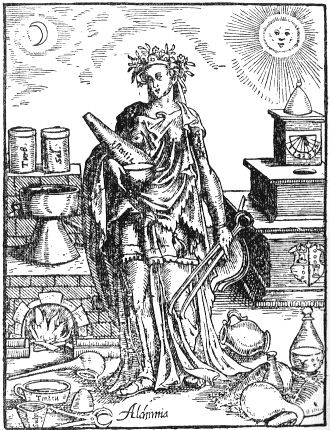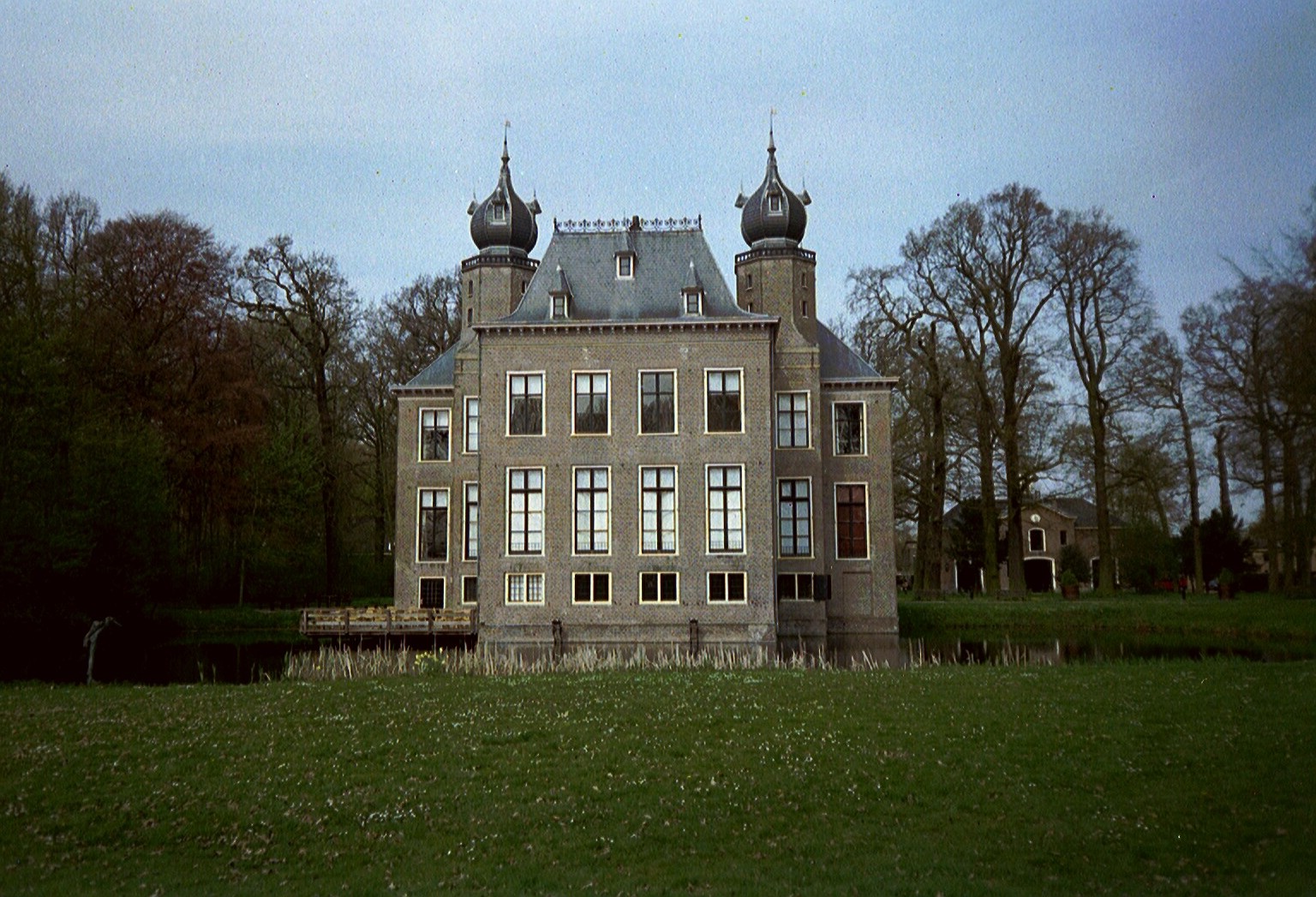|
Alkahest
In Renaissance alchemy, alkahest was the theorized "universal solvent". It was supposed to be capable of dissolving any other substance, including gold, without altering or destroying its fundamental components. Among its philosophical and spiritual preoccupations, Hermeticism was more anciently concerned with the panacea, but (in the context of reformed understandings of human physiology) the emergent Latin alchemy associated with European humanism was itself transmuted into a new medical and pharmaceutical philosophy. The Swiss physician and alchemist Philippus Paracelsus (1493-1541), who gave his name to the early modern school of medical theory known as Paracelcism, first made mention of the alkahest as a chemical which could fortify the liver, and (in instances where the liver failed) could act as a substitute for its functions (see ''De Viribus Membrorum Spiritualium'', Cap. VI, "De Cura Epatis", at p. 10). By reducing or dissolving substances into their fundamental v ... [...More Info...] [...Related Items...] OR: [Wikipedia] [Google] [Baidu] |
George Starkey
George Starkey (1628–1665) was a Colonial American alchemist, medical practitioner, and writer of numerous commentaries and chemical treatises that were widely circulated in Western Europe and influenced prominent men of science, including Robert Boyle and Isaac Newton. After relocating from New England to London, England, in 1650, Starkey began writing under the pseudonym Eirenaeus Philalethes. Starkey remained in England and continued his career in medicine and alchemy until his death in the Great Plague of London in 1665. Early life Starkey was born in Bermuda, the first of at least five children of George Stirk, a Scottish minister and devoted Calvinist, and Elizabeth Painter. During his early years in Bermuda, Starkey displayed interest in natural history, as evidenced by his written entomological observations of various insects indigenous to Bermuda. After the death of his father in 1637, Starkey was sent to New England, where he continued his early education before enrol ... [...More Info...] [...Related Items...] OR: [Wikipedia] [Google] [Baidu] |
Philosopher's Stone
The philosopher's stone or more properly philosophers' stone (Arabic: حجر الفلاسفة, , la, lapis philosophorum), is a mythic alchemical substance capable of turning base metals such as mercury into gold (, from the Greek , "gold", and , "to make") or silver. It is also called the elixir of life, useful for rejuvenation and for achieving immortality; for many centuries, it was the most sought-after goal in alchemy. The philosopher's stone was the central symbol of the mystical terminology of alchemy, symbolizing perfection at its finest, enlightenment, and heavenly bliss. Efforts to discover the philosopher's stone were known as the Magnum Opus ("Great Work"). History Antiquity The earliest known written mention of the philosopher's stone is in the ''Cheirokmeta'' by Zosimos of Panopolis (c. 300 AD). Alchemical writers assign a longer history. Elias Ashmole and the anonymous author of ''Gloria Mundi'' (1620) claim that its history goes back to Adam, who acquired t ... [...More Info...] [...Related Items...] OR: [Wikipedia] [Google] [Baidu] |
Humorism
Humorism, the humoral theory, or humoralism, was a system of medicine detailing a supposed makeup and workings of the human body, adopted by Ancient Greek and Roman physicians and philosophers. Humorism began to fall out of favor in the 1850s with the advent of germ theory, which was able to show that many diseases previously thought to be humoral were in fact caused by microbes. Origin The concept of "humors" (chemical systems regulating human behaviour) became more prominent from the writing of medical theorist Alcmaeon of Croton (c. 540–500 BC). His list of humors was longer and included fundamental elements described by Empedocles, such as water, air, earth, fire, etc.. The concept of "humors" may have origins in Ancient Egyptian medicine, or Mesopotamia, though it was not systemized until ancient Greek thinkers. The word ''humor'' is a translation of Greek χυμός, ''chymos'' (literally juice or sap, metaphorically flavor). Ancient Indian Ayurveda medicine had deve ... [...More Info...] [...Related Items...] OR: [Wikipedia] [Google] [Baidu] |
Robert Boyle
Robert Boyle (; 25 January 1627 – 31 December 1691) was an Anglo-Irish natural philosopher, chemist, physicist, alchemist and inventor. Boyle is largely regarded today as the first modern chemist, and therefore one of the founders of modern chemistry, and one of the pioneers of modern experimental scientific method. He is best known for Boyle's law, which describes the inversely proportional relationship between the absolute pressure and volume of a gas, if the temperature is kept constant within a closed system. Among his works, '' The Sceptical Chymist'' is seen as a cornerstone book in the field of chemistry. He was a devout and pious Anglican and is noted for his writings in theology. Biography Early years Boyle was born at Lismore Castle, in County Waterford, Ireland, the seventh son and fourteenth child of The 1st Earl of Cork ('the Great Earl of Cork') and Catherine Fenton. Lord Cork, then known simply as Richard Boyle, had arrived in Dublin from England i ... [...More Info...] [...Related Items...] OR: [Wikipedia] [Google] [Baidu] |
Corpuscularianism
Corpuscularianism (from the Latin ''corpusculum'' meaning "little body") is a set of theories that explain natural transformations as a result of the interaction of particles (''minima naturalia, partes exiles, partes parvae, particulae'', and ''semina''). It differs from atomism in that corpuscles are usually endowed with a property of their own and are further divisible, while atoms are neither. Although often associated with the emergence of early modern mechanical philosophy, and especially with the names of Thomas Hobbes,Kenneth Clatterbaugh, ''The Causation Debate in Modern Philosophy, 1637-1739'', Routledge, 2014, p. 69. René Descartes, Pierre Gassendi, Vere Claiborne Chappell (ed.), ''The Cambridge Companion to Locke'', Cambridge University Press, 1994, p. 56. Robert Boyle, Isaac Newton,virginia.edu [...More Info...] [...Related Items...] OR: [Wikipedia] [Google] [Baidu] |
Helmontian
Jan Baptist van Helmont (; ; 12 January 1580 – 30 December 1644) was a chemist, physiologist, and physician from Brussels. He worked during the years just after Paracelsus and the rise of iatrochemistry, and is sometimes considered to be "the founder of pneumatic chemistry". Van Helmont is remembered today largely for his ideas on spontaneous generation, his 5-year willow tree experiment, and his introduction of the word "gas" (from the Greek word ''chaos'') into the vocabulary of science. His name is also found rendered as Jan-Baptiste van Helmont, Johannes Baptista van Helmont, Johann Baptista von Helmont, Joan Baptista van Helmont, and other minor variants switching between ''von'' and ''van''. Early life and education Jan Baptist van Helmont was the youngest of five children of Maria (van) Stassaert and Christiaen van Helmont, a public prosecutor and Brussels council member, who had married in the Sint-Goedele church in 1567.Van den Bulck, E. (1999Johannes Bapti ... [...More Info...] [...Related Items...] OR: [Wikipedia] [Google] [Baidu] |
Maccabees (books Of Bible)
The Books of the Maccabees or the Sefer HaMakabim (the ''Book of the Maccabees'') recount the history of the Maccabees, the leaders of the Jewish rebellion against the Seleucid dynasty. List of books The Books of the Maccabees refers to a series of deuterocanonical books which are contained in various canons of the Bible: *1 Maccabees, originally written in Hebrew and only surviving in a Greek translation, it contains an account of the history of the Maccabees from 175 BC until 134 BC. *2 Maccabees, Jason of Cyrene's Greek abridgment of an earlier history which was written in Hebrew, recounts the history of the Maccabees from 176 BC until 161 BC. It focuses on Judas Maccabaeus, and it also describes prayers for the dead and offerings. *3 Maccabees, a Greek narrative that professes to contain a historical account of Egyptian Jews being delivered from their impending martyrdom at the hands of Ptolemy IV Philopator in the 3rd century BC. *4 Maccabees, a Greek philosophic discourse w ... [...More Info...] [...Related Items...] OR: [Wikipedia] [Google] [Baidu] |
Deuterocanonical Books
The deuterocanonical books (from the Greek meaning "belonging to the second canon") are books and passages considered by the Catholic Church, the Eastern Orthodox Church, the Oriental Orthodox Churches, and the Assyrian Church of the East to be canonical books of the Old Testament, but which Protestant denominations regard as apocrypha. They date from 300 BC to 100 AD, mostly from 200 BC to 70 AD, before the definite separation of the Christian church from Judaism. While the New Testament never directly quotes from or names these books, the apostles most frequently used and quoted the Septuagint, which includes them. Some say there is a correspondence of thought, and others see texts from these books being paraphrased, referred, or alluded to many times in the New Testament, depending in large measure on what is counted as a reference. Although there is no scholarly consensus as to when the Hebrew Bible canon was fixed, some scholars hold that the Hebrew canon was established ... [...More Info...] [...Related Items...] OR: [Wikipedia] [Google] [Baidu] |
Herman Boerhaave
Herman Boerhaave (, 31 December 1668 – 23 September 1738Underwood, E. Ashworth. "Boerhaave After Three Hundred Years." ''The British Medical Journal'' 4, no. 5634 (1968): 820–25. https://www.jstor.org/stable/20395297.) was a Dutch botanist, chemist, Christian humanist, and physician of European fame. He is regarded as the founder of clinical teaching and of the modern academic hospital and is sometimes referred to as "the father of physiology," along with Venetian physician Santorio Santorio (1561–1636). Boerhaave introduced the quantitative approach into medicine, along with his pupil Albrecht von Haller (1708–1777) and is best known for demonstrating the relation of symptoms to lesions. He was the first to isolate the chemical urea from urine. He was the first physician to put thermometer measurements to clinical practice. His motto was ''Simplex sigillum veri'': 'Simplicity is the sign of the truth'. He is often hailed as the "Dutch Hippocrates". Biography Boerhaave ... [...More Info...] [...Related Items...] OR: [Wikipedia] [Google] [Baidu] |
Lymph
Lymph (from Latin, , meaning "water") is the fluid that flows through the lymphatic system, a system composed of lymph vessels (channels) and intervening lymph nodes whose function, like the venous system, is to return fluid from the tissues to be recirculated. At the origin of the fluid-return process, interstitial fluid—the fluid between the cells in all body tissues—enters the lymph capillaries. This lymphatic fluid is then transported via progressively larger lymphatic vessels through lymph nodes, where substances are removed by tissue lymphocytes and circulating lymphocytes are added to the fluid, before emptying ultimately into the right or the left subclavian vein, where it mixes with central venous blood. Because it is derived from interstitial fluid, with which blood and surrounding cells continually exchange substances, lymph undergoes continual change in composition. It is generally similar to blood plasma, which is the fluid component of blood. Lymph returns pro ... [...More Info...] [...Related Items...] OR: [Wikipedia] [Google] [Baidu] |
High Dutch
Dutch ( ) is a West Germanic language spoken by about 25 million people as a first language and 5 million as a second language. It is the third most widely spoken Germanic language, after its close relatives German and English. ''Afrikaans'' is a separate but somewhat mutually intelligible daughter languageAfrikaans is a daughter language of Dutch; see , , , , , . Afrikaans was historically called Cape Dutch; see , , , , , . Afrikaans is rooted in 17th-century dialects of Dutch; see , , , . Afrikaans is variously described as a creole, a partially creolised language, or a deviant variety of Dutch; see . spoken, to some degree, by at least 16 million people, mainly in South Africa and Namibia, evolving from the Cape Dutch dialects of Southern Africa. The dialects used in Belgium (including Flemish) and in Suriname, meanwhile, are all guided by the Dutch Language Union. In Europe, most of the population of the Netherlands (where it is the only official language spoken countryw ... [...More Info...] [...Related Items...] OR: [Wikipedia] [Google] [Baidu] |




